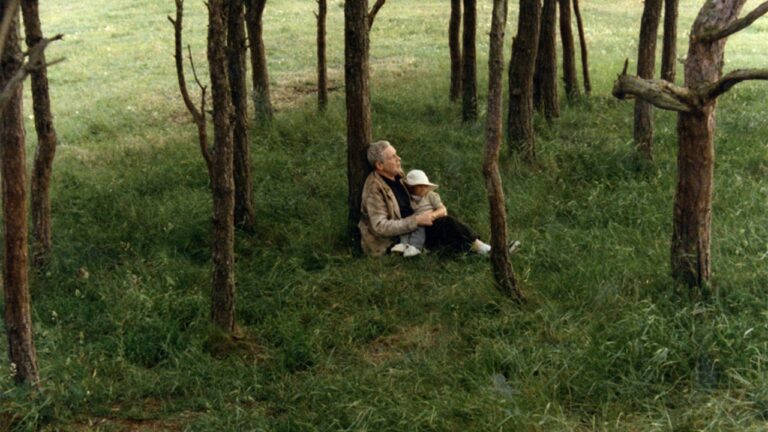When Andrei Tarkovsky started making ‘The Sacrifice‘ in Sweden in 1985, he was living away from his home country and struggling with illness. He knew that time was running out. Because of this, the film feels like a final offering, something made not for recognition but as a personal act of faith. It would become his last completed work, one that gathered together everything he had believed about art, time, and the human spirit.
The story follows Alexander, played by Erland Josephson, a man who lives quietly with his family near the sea. On his birthday, as his friends and family gather to celebrate, the news of a possible nuclear war breaks on television. There is no warning and no explanation, only fear and confusion. In that moment, Alexander makes a desperate promise to God. He asks for the world to be spared and vows that he will give up everything he loves if peace can be restored. What happens next is not about miracles or disasters, but about the cost of keeping a promise that no one else understands.
When Faith Becomes a Question

Tarkovsky said that The Sacrifice should be seen as a parable. It is set in the modern world, yet it speaks in the language of old faith and ancient ritual. We are shown ordinary people facing something that is beyond their control, and through them, Tarkovsky asks what any of us might do when faced with the end of all things. The film moves slowly, not to confuse us, but to let us notice every look, every silence, and every small act that reveals what belief really means. Because of this, the experience of watching it becomes deeply personal, as if we are being asked to reflect on our own capacity for faith.
When Tarkovsky came to Sweden, he worked with Sven Nykvist, the cinematographer known for his long collaboration with Ingmar Bergman. Together, they created images that feel simple and honest. The light changes gently, and the landscape of Gotland, with its empty fields and gray sky, gives the film a quiet and steady presence. There is nothing showy or exaggerated. The camera observes life with patience, which allows us to feel the weight of time and the fragility of each moment.
The making of the film was difficult. The most demanding scene involved setting a large wooden house on fire. The first attempt failed because the main camera stopped working. For most directors, that would have been the end of it. But Tarkovsky insisted that the scene be done again. The entire house was rebuilt, and the crew repeated the process. The second take worked, capturing a long, continuous shot of the house burning while the characters stand and watch. That image, simple as it is, became one of the most striking endings in world cinema. It carries the sense of both loss and renewal, as if destruction were part of creation itself.
The Last Gesture of an Artist Through Despair, Hope, and the Choice to Care

When The Sacrifice premiered at the Cannes Film Festival in 1986, it won the Grand Prix and the Prize of the Ecumenical Jury. Many critics saw it as the final expression of Tarkovsky’s lifelong themes. In earlier films like Andrei Rublev, Solaris, Stalker, and Nostalghia, he had explored the tension between faith and doubt, reason and mystery. Here, he brought all of that together in one final gesture of surrender. He once wrote that art should help people to understand their place in the world. In The Sacrifice, he tried to show that even when we face despair, there is still a choice to act with love and humility.
The film’s closing moments return to Alexander’s young son, who waters a dry, leafless tree. Tarkovsky took this image from a story he often told about a monk who watered a dead tree every day until, after many years, it finally bloomed. It is a small and quiet act, yet it carries hope. It reminds us that renewal often begins in the most ordinary gestures, the kind that go unnoticed. After all, belief is not always grand or certain. Sometimes it is simply the act of continuing to care when there seems to be no reason to.
A few months after The Sacrifice was released, Tarkovsky died in Paris at the age of fifty-four. There was no public farewell, only the lasting presence of his work. When we look at this film today, it still feels alive because it speaks to something we all recognize: the fear of losing what we love and the wish to save it, even at great cost. Tarkovsky never offered clear answers, but he left us a way of seeing the world that is full of honesty and grace. Through Alexander’s prayer and through the fire that ends the film, we see a simple truth, that sometimes the greatest act of hope is to give everything away and still believe that something good can return.




